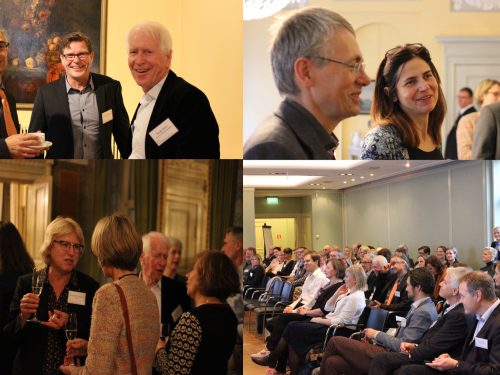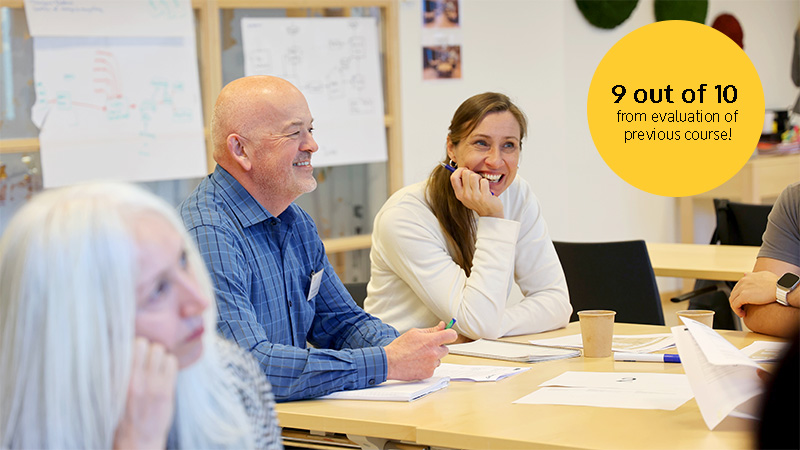Our history
The center has a history of more than 25 years and has become a credible, well known platform for life cycle professionals. It was founded as CPM in 1996 as a joint effort between Nutek (later VINNOVA), Chalmers University of Technology and a range of international companies. Over the years the center has concluded nine stages with different focus areas and partner constellations but the focus on applied life cycle thinking has remained as its base.

“Swedish Life Cycle Center has been instrumental for the development and adoption of the life cycle perspective in Swedish companies and has made important contributions to international standardization in the life cycle field.”
Anne-Marie Tillman, Professor Emerita & one of the founders of the Center in 1996
Overview of the stages
Stage 1, 1996-1998: Develop structure, terminology & requirements
The beginning was to develop database structures, terminology and quality requirements for life cycle data and how life cycle assessment (LCA) results ought to be implemented and evaluated.
Stage 2, 1998-2001. Focus on national database
Next step was to futher develop the database and gather data to build the national database that now is located at Swedish Life Cycle Center. As the knowledge and understanding within the partner companies had increased was the need for communicating also important. The initial steps were taken towards a shared communication format within the Environmental Products Declaration, EDP, and Type III area.
Stage 3, 2001-2004: Extended scope to Life Cycle Costing & Environmental risk assessment
Knowledge of product´s environmental impact had grown and LCA could not answer all the new questions being asked. The scope was widened to include areas such as life cycle costing (LCC) and environmental risk assessment. Our main focuses here were tools and methods for sustainable development.
Stage 4, 2004-2006: Focus on applications of LCA results
The companies use of LCA in its current form has given them enough knowledge about existing products and they have moved on using LCA exclusively in research and development. This has led to focusing on the pratical applications of answers provided by LCA and a more defined connection between enivonmental thinking and economy. Result has primarily been about implementing results, and demonstrating the financial gains necessary to prove the companies are on the right track.
Stage 5, 2006-2009: Monetarisation and valuation in scope
During this period, the collaboration projects dealt with Eco-efficiency (EE) Extra Financial Analysis (EFA) and external costs of goods transport. The link to economic assessment and valuation was further explored as well.
Stage 6, 2009-2012: Communicating Life Cycle Thinking in value chain
Main focus was on communication and the spread of life cycle thinking through the value chain. Mainly in company operations and upstream, such as supply chain management, transportation and production. Parallel to the research projects, training for practitioners and operational working groups were developed. The need for higher international presence and recognition was identified as an opportunity for further development.
Stage 7, 2012-2015: Swedish Life Cycle Center becomes the new name
CPM – Center for environmental assessment of product and material systems, officially became Swedish Life Cycle Center, which expresses the broader perspective of the life cycle field. The stage has been characterized by new collaborations, increased internationalization and improved ways of working of the center management. A lot of effort were put on the organization of the 6th international conference on Life Cycle Management (LCM 2013) in Gothenburg. New working areas were social LCA, biodiversity issues and areas for further development were economic valuation, data quality and transparency. Another focus was implementation of life cycle thinking (LCT) in policy development.
Stage 8, 2016-2018: Influence national & international initiatives
Main focus was to strengthen the internal collaboration to better influence the national and international initiatives. Contributed in the development of GLAD – for open and accessible life cycle data, and harmonization of the field of monetarization through a leadership in the ISO framework. New way of working among our academic partners was initiated and among national Government agencies with the aim to increase collaboration between the agencies and between the agencies and the life cyle community for capacity building. The first PhD course was given and the course Applied life cycle thinking was developed. The Center granted funding from the Swedish Energy Agency to strengthen the national collaboration and reach outside existing partners to increase the application of the life cycle perspective.
Stage 9, 2019-2021: Environmental footprint & modelling of recycling
In stage 9, The Center engaged both partners and external stakeholders in its activities to increase the understanding of different allocation perspectives when model recycling in life cycle assessment (LCA). Many concepts were tested and evaluated in case studies and dialogues in collaboration between researchers, practitioners and public decision makers. Findings from different recycling projects have been used in further development of the ISO framework and in the EU Environmental Footprint initiative. The Center has constituted an important platform in Sweden to coordinate Swedish experts in the development of the Environmental Footprint initiative and for mutual learning in this field to better understand the methods (PEF and OEF) and follow the development process of policies and legislations. The webinar series took off and throughout the stage participants from all over the world took part in activities. The pandemic also contributed to give the training Applied life cycle thinking online, that attracted participants globally.
Stage 10, 2022-2024 Conference, circularity and communication
The major achievement of the Stage was the co-organization (together with SETAC) of the SETAC Europe 26th LCA Symposium, which took place in October 2024. Funding from the Swedish Energy Agency enabled the continued development of communication and digital meeting formats, which led to new ways of reaching both partners and broader audiences with new knowledge and developments. The Center supported and actively participated in the ongoing development of the EU Environmental Footprint and in standardization processes. New areas for research and development included LCA and circularity, as well as Business Model LCA. The first Research Strategy for the Center was developed during the Stage, complementing the Operational Plan with research specific strategies.

